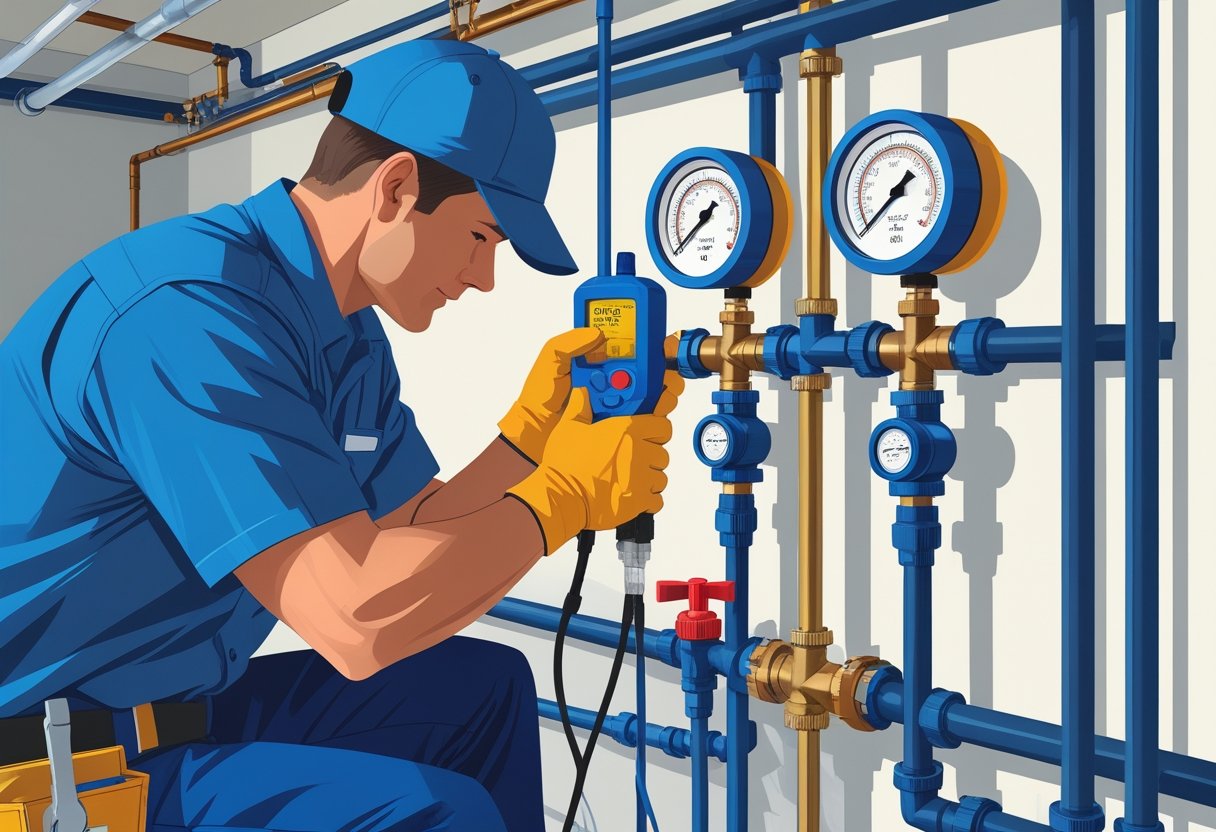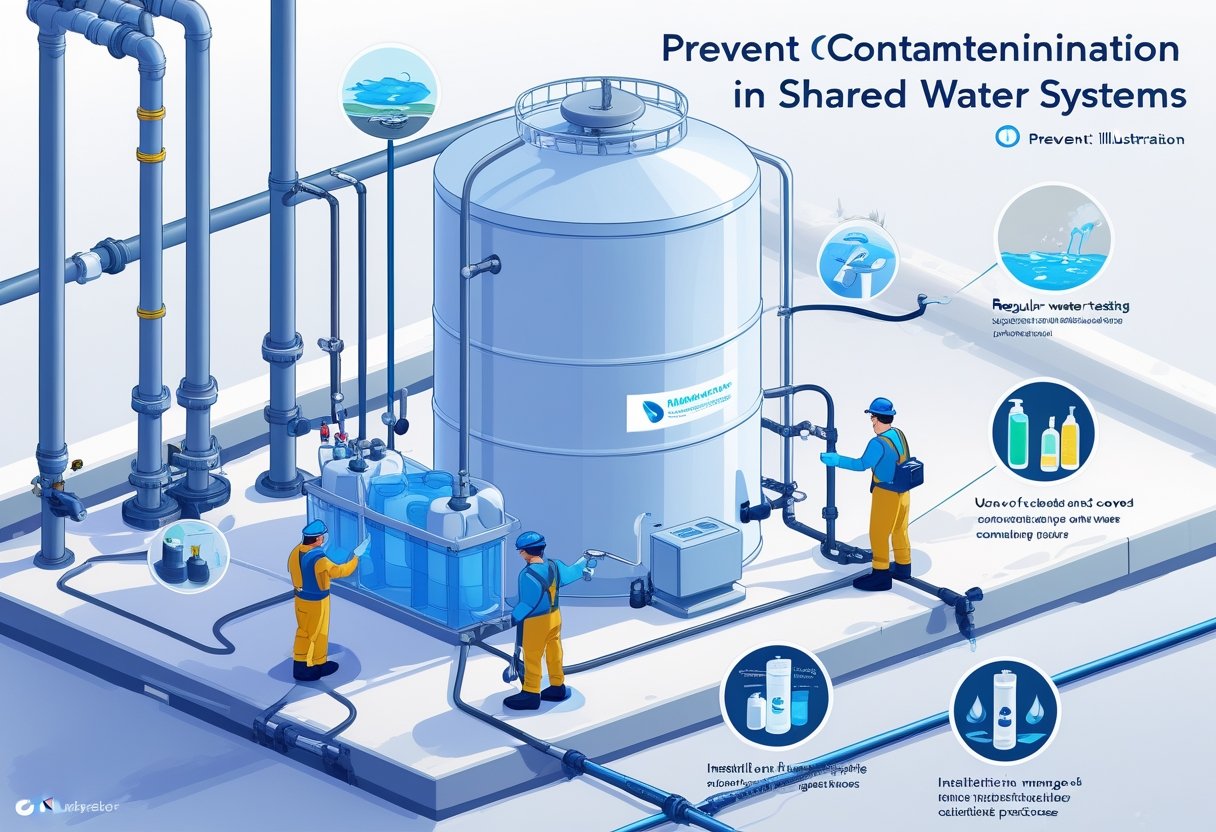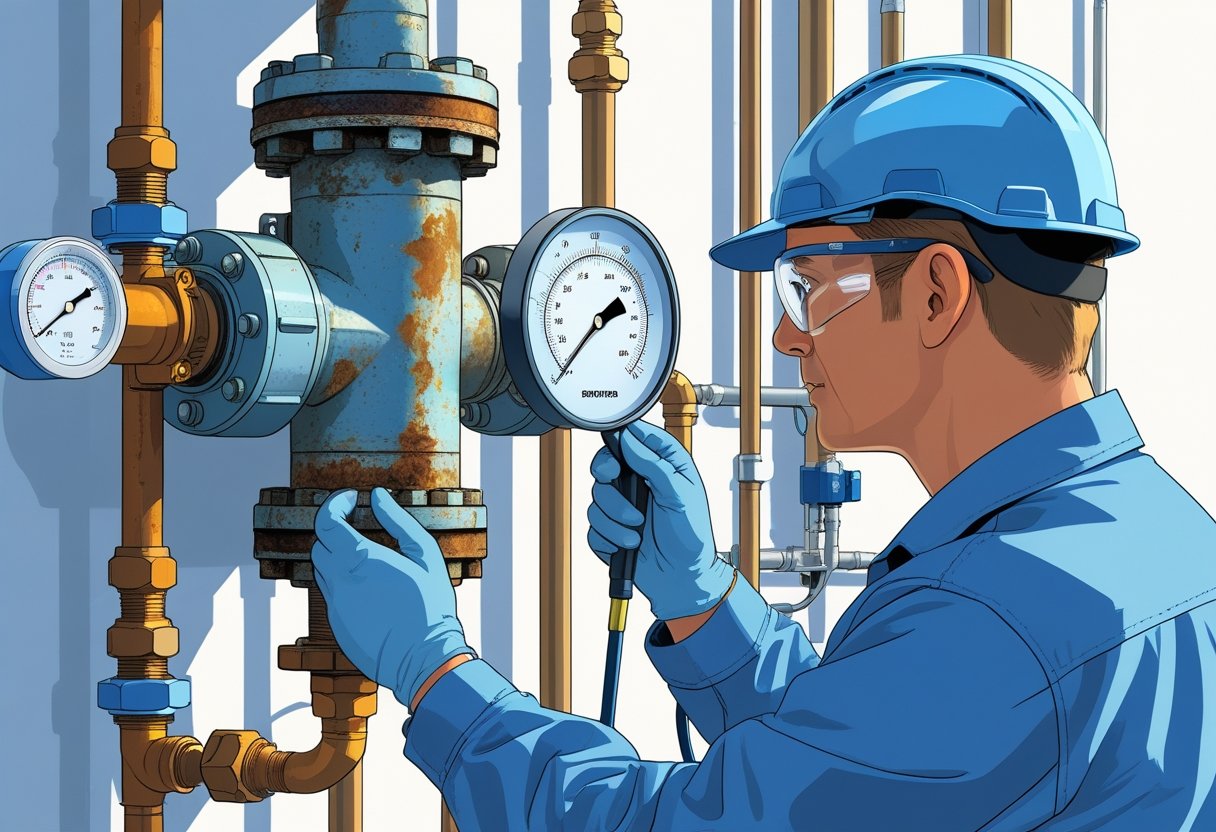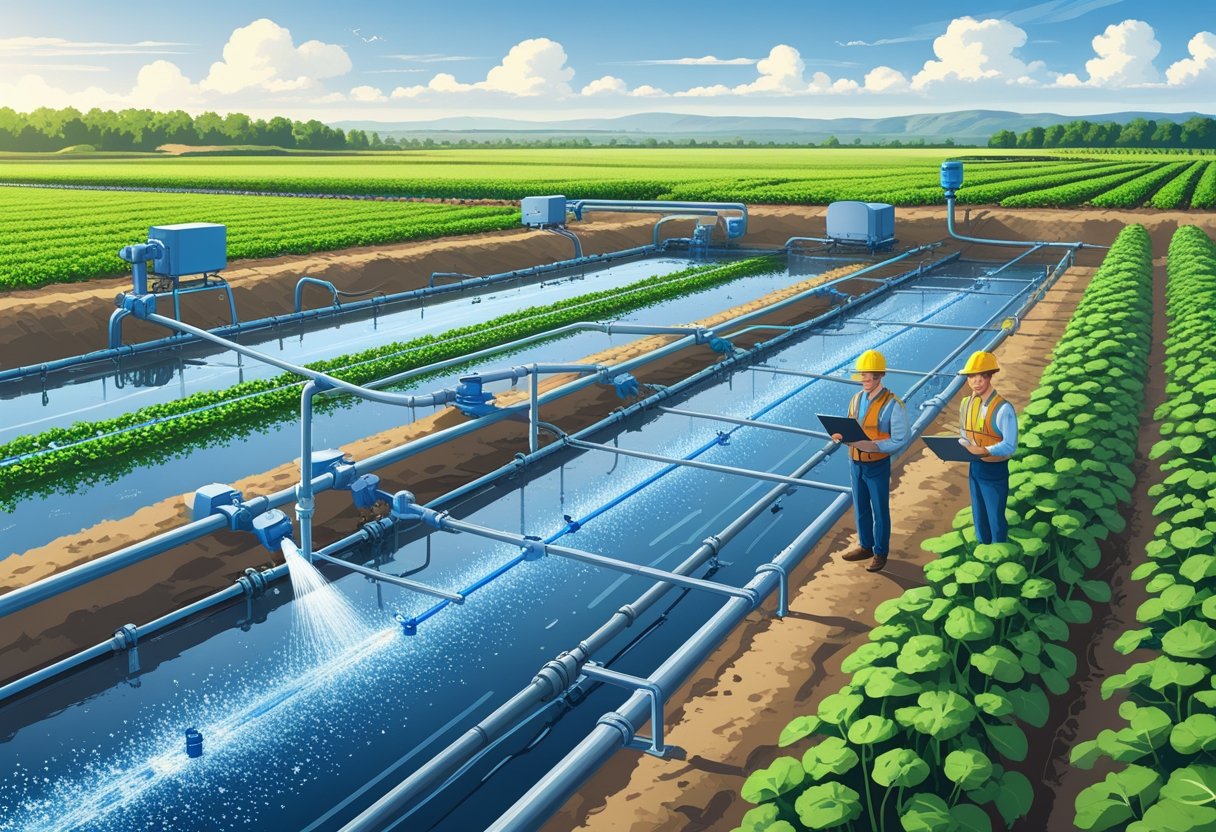Backflow testing is essential for safeguarding your drinking water from contamination. By ensuring that your backflow prevention devices are functioning correctly, you protect your health and that of your community. This process involves the regular assessment of these devices to prevent potentially harmful pollutants from flowing back into your clean water supply.
At Pacific Backflow, we understand the importance of maintaining a safe water supply for All of San Diego County. Our certified technicians offer reliable, responsive backflow testing services that not only comply with local regulations but also provide peace of mind. When issues arise with your backflow preventer, you can count on us for prompt repairs or replacements, ensuring continuous protection for your water system.
You deserve the confidence that comes with knowing your backflow prevention system is performing optimally. Trust Pacific Backflow to handle all your backflow testing needs, keeping your water supply safe and satisfying the compliance requirements you must meet.
Understanding Water Backflow and Its Risks
Water backflow is a significant issue in plumbing that can lead to serious health risks. By recognizing what backflow is, how it occurs, and the dangers it poses, you can take crucial steps to protect your water supply.
What Is Water Backflow?
Water backflow refers to the unintended reversal of water flow in a plumbing system. This phenomenon can cause contaminated water to flow back into clean water supplies. Typically, it occurs due to changes in water pressure caused by events like a burst pipe or high demand on the system.
Cross-connections within a plumbing system, where potable water lines meet non-potable sources, create ideal conditions for backflow. Without proper safeguards, pollutants can easily enter your water supply.
Causes of Backflow in Plumbing Systems
Several factors contribute to backflow in plumbing systems. Negative pressure, often referred to as back pressure, can occur due to water demand surges, such as during firefighting efforts. This pressure change allows contaminated water from different sources to reverse its flow.
Cross-connections are another significant cause of backflow. When a connection between clean and dirty water sources is made, it creates a risk. Inadequate backflow prevention devices or faulty plumbing can exacerbate these issues, making regular testing imperative.
Risks and Consequences of Backflow
The risks associated with water backflow are considerable. Contaminated water can lead to health hazards, exposing you and your community to harmful pathogens and toxins. This risk is particularly alarming in public health contexts, where safety standards must be met.
Additionally, backflow can result in regulatory violations, potentially leading to fines and legal complications. Maintaining a safe and compliant water supply requires proactive action, such as engaging Pacific Backflow for expert backflow testing and maintenance to ensure your system operates within safety standards. Taking these steps is critical to safeguarding public health and your home or business.
Essentials of Backflow Testing
Backflow testing is crucial for ensuring the safety and quality of your drinking water. This section will cover the purpose of backflow testing, its key benefits, and the common methods used for testing.
Purpose and Importance of Backflow Testing
Backflow testing is designed to prevent contaminated water from flowing back into your potable water supply. This is essential for maintaining water quality and public health. Contaminants can include chemicals, bacteria, and other pollutants that pose serious health risks.
Regular testing is necessary to ensure that backflow prevention devices are functioning correctly. Many local regulations mandate this process to safeguard community drinking water. By conducting these tests, you can help avoid potential contamination and ensure compliance with government standards.
Key Benefits for Water Quality and Safety
Conducting backflow testing offers several benefits that directly impact water quality and safety. Firstly, it protects against the risk of contamination in your drinking water. Effective backflow prevention devices keep harmful substances from entering your system.
Moreover, regular testing ensures that these devices are working as intended. This promotes confidence among residents regarding the safety of their water. Additionally, by complying with local regulations, you avoid fines and penalties that may arise from non-compliance.
Trusted professionals, like those at Pacific Backflow, conduct annual assessments to keep your system in optimal condition. Their expertise ensures that your backflow prevention measures effectively protect your water supply.
Common Types of Backflow Testing Methods
Various methods exist for backflow testing, and each has its own significance. Among the most commonly used methods are visual inspections, functional testing, and pressure testing.
- Visual Inspection: This method involves a thorough check of the backflow prevention assembly for any visible defects or wear. Regular visual assessments can identify basic issues before they become major problems.
- Functional Testing: This process assesses the operational effectiveness of backflow devices under pressure. Certified technicians simulate backflow conditions to ensure that devices react appropriately.
- Pressure Testing: Used to determine if the system can handle the expected water pressure. This helps to identify weaknesses in the system that could lead to backflow events.
By understanding these testing methods, you can better appreciate the importance of regular assessments for maintaining water quality.
Backflow Prevention Devices and Their Function
Understanding the role of backflow prevention devices is crucial for maintaining clean water supplies. These devices protect your water system from contamination, ensuring safe access to drinking water. Below are detailed insights into their function and importance.
Overview of Backflow Prevention Devices
Backflow prevention devices are essential components in plumbing systems designed to prevent contaminated water from reversing its flow into the clean water supply. They act as safeguards, responding to changes in water pressure that could allow backflow. When properly maintained, these devices ensure that pollutants do not enter your drinking water, thereby safeguarding public health.
These devices utilize mechanics like check valves, which only allow water to flow in one direction, preventing any backflow. Compliance with local plumbing regulations often mandates the installation of backflow preventers in residential, commercial, and industrial settings.
Types of Backflow Preventers
Several types of backflow preventers are available, each serving specific applications. The most common types include:
- Reduced Pressure Zone (RPZ) Devices: These are highly effective for hazardous substances and are often used in commercial settings.
- Double Check Valves: Suitable for lower-risk applications, they contain two check valves to provide a backup barrier against backflow.
- Pressure Vacuum Breakers: Typically used in irrigation systems, these prevent backflow by breaking the vacuum created during low pressure.
Choosing the right type of backflow preventer is essential for compliance and effective protection. At Pacific Backflow, our knowledgeable team can help you select the best option for your needs.
How Devices Protect the Clean Water Supply
Backflow prevention devices protect your clean water supply by utilizing different mechanisms to block contaminants. For instance, check valves ensure that water flows in only one direction, effectively stopping any unwanted backflow.
In the event of a sudden drop in pressure, devices like RPZs automatically engage to prevent contaminants from entering the system. Regular testing and maintenance of these devices are critical to ensure they function effectively.
Annual testing not only verifies compliance but also guarantees that your backflow preventers are operating as intended. Rely on Pacific Backflow for all your backflow testing needs, ensuring your water supply remains uncontaminated and safe.
Backflow Testing Process and Professional Standards
Backflow testing is essential for maintaining a safe water supply system. Understanding the specific processes involved, the role of certified professionals, and the key elements of inspection and documentation will help ensure compliance with local regulations.
Steps in Backflow Testing
The backflow testing process typically begins with a request for service. This can often be done by submitting test notices via email or fax to a qualified technician. Once initiated, a certified professional from Pacific Backflow will conduct an inspection of the backflow preventer.
During the test, the technician evaluates the device's function, ensuring it effectively prevents reverse water flow. If issues arise, repairs may be necessary before compliance can be achieved. A thorough report of the findings will be generated, ensuring transparency in the process.
Role of Certified Professionals
Certified professionals play a crucial role in backflow testing. They possess the knowledge and training required to understand complex plumbing systems and local regulations. This expertise allows them to accurately identify potential risks and ensure all safety standards are met.
Working with a certified professional from Pacific Backflow means you can trust that your system is checked against the most up-to-date codes and guidelines. Their experience and skills ensure that any tests or repairs are performed efficiently and compliant with water safety standards.
Inspection, Documentation, and Compliance
Inspection and documentation are vital components of backflow testing. After completing the testing process, the technician documents the results and submits them to the city water authority. This submission is essential for maintaining compliance with local regulations.
Pacific Backflow also makes this process stress-free by handling all the paperwork on your behalf. You receive copies of the reports for your records, ensuring that all documentation is accurate and up-to-date. This attention to detail supports your ongoing compliance and contributes to the safety of your water supply system.
Regulations, Compliance, and Maintenance
Understanding the rules surrounding backflow prevention is vital for protecting public health and ensuring a clean water supply. Compliance with local and national regulations is essential for property owners, along with maintaining your plumbing system to prevent issues, particularly after incidents like water main breaks.
Local and National Testing Requirements
Adherence to local regulations is necessary for your backflow prevention devices. Each locality may have specific requirements for testing frequency, typically mandated annually. National guidelines also promote the importance of maintaining safe drinking water.
You must ensure your backflow preventer is tested by a certified professional. In San Diego County, organizations like Pacific Backflow provide reliable compliance testing services. They offer fast, hassle-free testing and handle report submissions with local water authorities to keep you in compliance.
Maintaining Backflow Prevention Devices
Regular maintenance of your backflow prevention devices is crucial to safeguard your clean water supply. Inspections should be routine, focusing on identifying any malfunction or wear in the system. If your backflow preventer fails, it can allow contamination from your plumbing system to affect the larger water supply.
Pacific Backflow specializes in both testing and maintenance. By ensuring that your backflow devices are regularly serviced, you not only comply with regulations but also protect public health and your property’s plumbing.
Responding to a Backflow Incident
In the event of a backflow incident, a quick response is vital. Contaminated water can pose significant health risks, so immediate action is essential. First, notify the local water authority and mitigate the spread of contamination.
It’s wise to have a plan in place for emergencies. Pacific Backflow offers after-hours emergency services to address urgent situations. Their expertise ensures that any leaks or system failures are swiftly resolved, maintaining compliance and safeguarding your water supply.
Protecting Your Property and Community
Maintaining water safety is essential for the health of both your property and the larger community. By understanding the implications of contaminated water and integrating best practices, you contribute significantly to public health.
Health Impacts of Contaminated Water
Contaminated water poses serious health risks. It can lead to gastrointestinal illnesses, reproductive problems, and neurological disorders. Vulnerable populations such as children and the elderly are particularly at risk. Pathogens and chemicals can enter your water supply due to backflow incidents, highlighting the importance of effective prevention measures. Regular testing and maintenance of your backflow prevention devices are critical in safeguarding against these hazards. Protecting your water supply helps uphold the health of your community and fosters a safer environment for everyone.
Best Practices for Homeowners and Businesses
Homeowners and businesses play a vital role in ensuring water safety. First, schedule annual backflow testing to guarantee your devices function correctly and meet local regulations. Keep a maintenance log of your backflow preventer to track any repairs or installations, which helps ensure compliance. Additionally, educate your staff and family about the signs of potential backflow issues, such as changes in water pressure or discoloration. Engaging with local plumbing services, like Pacific Backflow, can further enhance the safety of your water supply. They provide reliable backflow testing, installations, and repairs tailored to your specific needs.
Choosing a Backflow Testing Service
When selecting a backflow testing service, experience and reliability are paramount. Opt for a service provider that has a proven track record and adheres to local regulations. In San Diego County, choose companies like Pacific Backflow, known for their prompt and professional service. Look for technicians who are certified and knowledgeable about the latest compliance standards. It’s also essential that the service includes filing reports with local water authorities, which keeps you stress-free and compliant. With the right service, you can ensure that your backflow systems are functioning properly, protecting your property and the community's water supply.
Frequently Asked Questions
Understanding backflow testing is essential for maintaining safe water supply systems. Here are specific questions and answers that address common concerns regarding backflow testing procedures, legalities, and professional qualifications.
What determines the cost of a backflow test?
The cost of a backflow test can vary based on several factors, such as location, the complexity of the system, and whether repairs or replacements are needed. Typically, service providers like Pacific Backflow offer competitive pricing tailored to the specific needs of your property.
What are the legal requirements for backflow testing in residential areas?
Many regions have regulations that mandate regular backflow testing for residential properties to prevent contamination of the water supply. Local water authorities often set these requirements, so it is important to stay informed about the regulations in your area.
How frequently should backflow prevention devices be tested?
Backflow prevention devices should generally be tested annually. This ensures the devices are functioning properly and compliant with regulatory standards. Some areas may have more stringent requirements, so check with your local water authority.
Can you explain why mandatory backflow testing is implemented?
Mandatory backflow testing helps protect public health by preventing contaminated water from entering the potable water supply. By ensuring that backflow prevention devices are functioning correctly, communities can significantly reduce the risk of waterborne illnesses.
What is the process involved in performing a backflow test?
The backflow testing process typically involves inspecting the device, conducting specific tests to measure pressure, and assessing for any backflow events. Certified technicians evaluate the results, and if repairs are necessary, they provide a detailed report and recommendations.
Are there any specific qualifications that a professional should have to conduct backflow testing?
Professionals conducting backflow testing should have certification from recognized training programs. These credentials ensure they understand the technical aspects of backflow systems and are knowledgeable about local regulations, making them well-equipped to perform the tests accurately.











